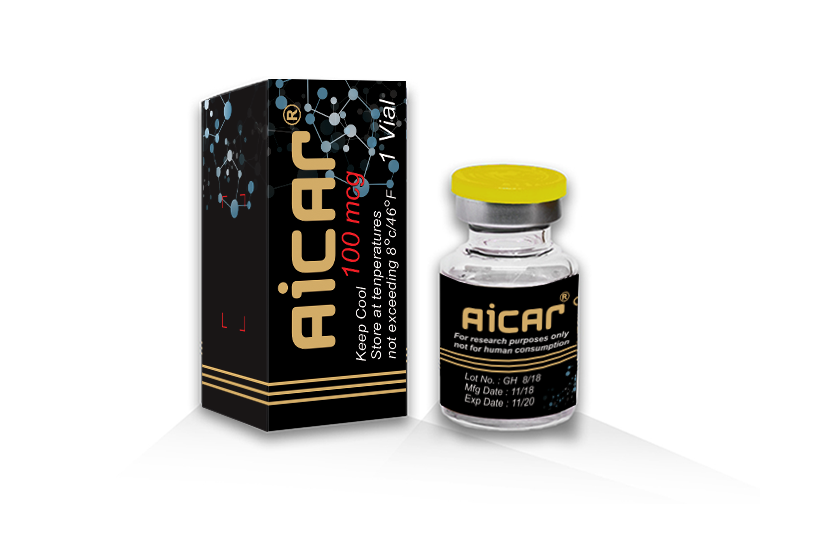AICAR 100MG
All the information below is strictly for research purposes only. Under no circumstance should this chemical be used for human consumption.
CAS NO. 86168-78-7
Molecular Formula: C9H15N4O8P
Molecular Weight: 668.2
Chemical formula: C9H15N4O8P
Molar masS: 338.21 g·mol−1
Formula: 5-Amino-1-β-D-ribofuranosyl-imidazole-4-carboxamide
AICA-Ribonucleotide (AICAR)[edit] AICAR (5-amino-1-β-D-ribofuranosyl-imidazole-4-carboxamide), also known as ZMP, is an analog of AMP that is capable of stimulating AMP-dependent protein kinase activity (AMPK). AICAR is being researched to treat and protect against cardiac ischemic injury. If left untreated, it may lead to a myocardial infarct. Cardiac Ischemia is caused by insufficient blood flow and oxygen to the myocardium. AICAR was first used in the 1980s as a method to preserve blood flow to the heart during surgery.
Currently, AICAR has also been shown as a potential treatment for diabetes by increasing the metabolic activity of tissues by changing the physical composition of muscle. AICAR (commonly under the name Acadesine) is an analog of adenosine that enters cardiac cells to inhibit adenosine kinase and adenosine deaminase. It enhances the rate of nucleotide re-synthesis increasing adenosine generation from adenosine monophosphate only during conditions of myocardial ischemia. In cardiac myocytes, AICA-riboside is phosphorylated to AICA-ribotide (ZMP) to activate AMPK without changing the levels of the nucleotides. ZMP is able to enter the de novo synthesis pathway for adenosine synthesis to inhibit adenosine deaminase causing an increase in ATP levels and adenosine levels.
Top of Form
AICA ribonucleotide or AICAR (aminoimidazole carboxamide ribonucleotide) is an intermediate in the generation of inosine monophosphate, which acts as an AMP-activated protein kinase agonist.[1] It stimulates glucose uptake and increases the activity of p38 mitogen-activated protein kinases α and β in skeletal muscle tissue,[2] as well as suppressing apoptosis by reducing production of reactive oxygen compounds inside the cell.[3] In 2008, researchers at the Salk Institute discovered that AICAR given to experimental mice significantly improves their performance in endurance-type exercise, apparently by converting fast-twitch muscle fibers to the more energy-efficient, fat-burning, slow-twitch type. They also looked at the administration of GW 501516 (also called GW1516) in combination with AICAR. Given to mice that did not exercise, this combination activated 40% of the genes that were turned on when mice were given GW1516 and made to exercise. This suggests it may be possible to obtain some of the benefits of exercising without actually exercising.[4] Because of the enhanced endurance effects, this could potentially be used by athletes to enhance their performance. One of the lead researchers from this study has developed a urine test to detect it and has made the test available to the International Olympic Committee, and the World Anti-Doping Agency has added AICAR to the prohibited list from 2009 onwards.
Terms: This product is intended for laboratory research use only.

